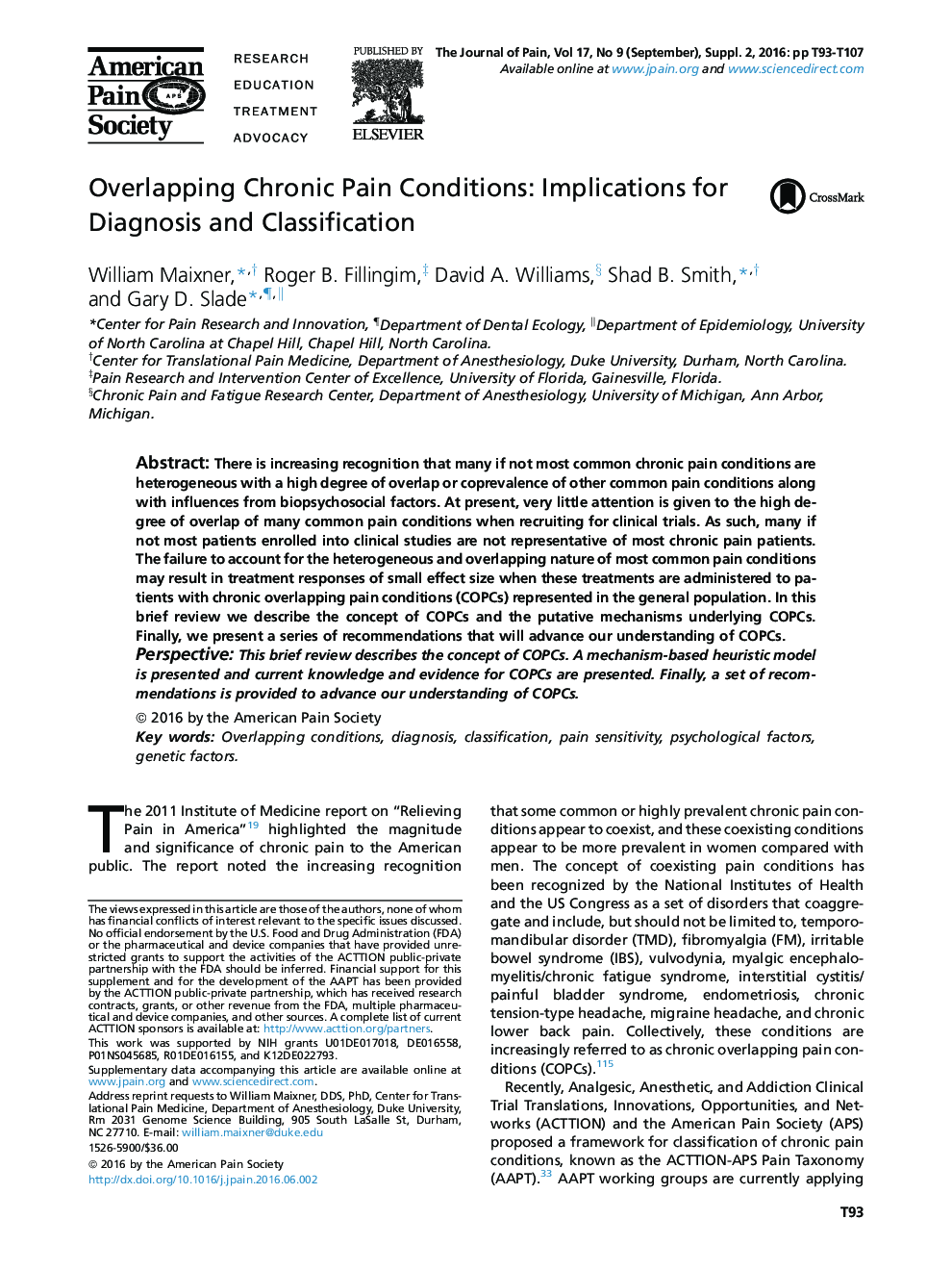| Article ID | Journal | Published Year | Pages | File Type |
|---|---|---|---|---|
| 2722790 | The Journal of Pain | 2016 | 15 Pages |
•Common chronic pain conditions as entities are defined mechanistically rather than anatomically.•The authors note the high coprevalence of many common chronic pain conditions.•The authors provide a theoretical framework that is explanatory of the biopsychosocial and genetic mechanisms that underlie chronic overlapping pain conditions.•The authors review the literature that supports the concept and mechanisms underlying chronic overlapping pain conditions.•The authors provide a set of recommendations to advance chronic pain condition research.
There is increasing recognition that many if not most common chronic pain conditions are heterogeneous with a high degree of overlap or coprevalence of other common pain conditions along with influences from biopsychosocial factors. At present, very little attention is given to the high degree of overlap of many common pain conditions when recruiting for clinical trials. As such, many if not most patients enrolled into clinical studies are not representative of most chronic pain patients. The failure to account for the heterogeneous and overlapping nature of most common pain conditions may result in treatment responses of small effect size when these treatments are administered to patients with chronic overlapping pain conditions (COPCs) represented in the general population. In this brief review we describe the concept of COPCs and the putative mechanisms underlying COPCs. Finally, we present a series of recommendations that will advance our understanding of COPCs.PerspectiveThis brief review describes the concept of COPCs. A mechanism-based heuristic model is presented and current knowledge and evidence for COPCs are presented. Finally, a set of recommendations is provided to advance our understanding of COPCs.
